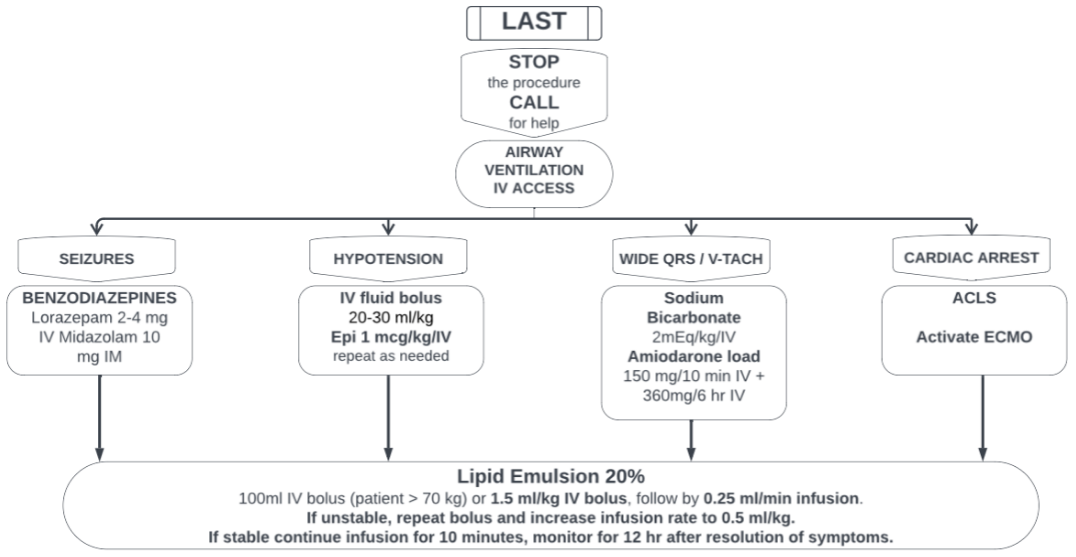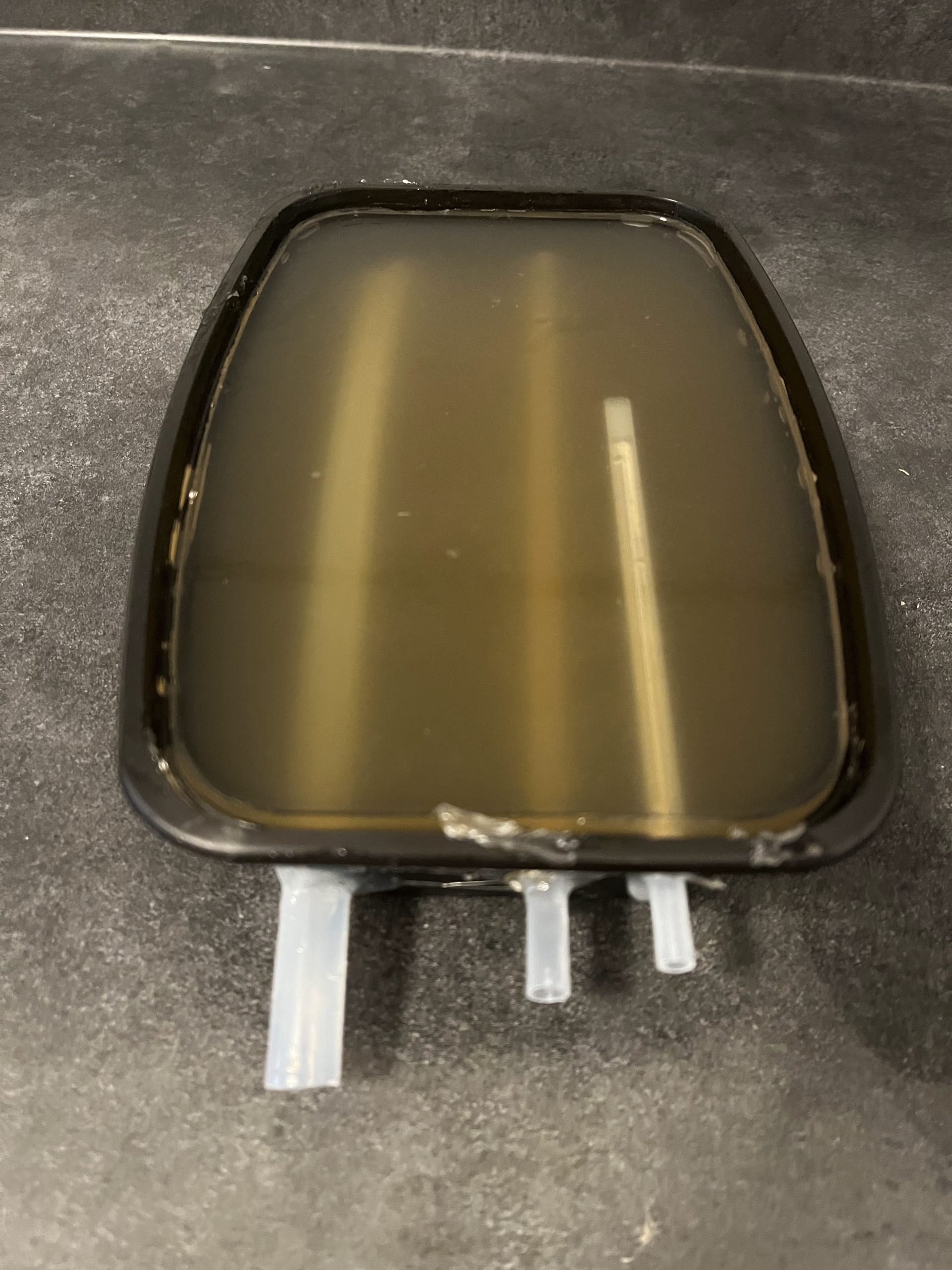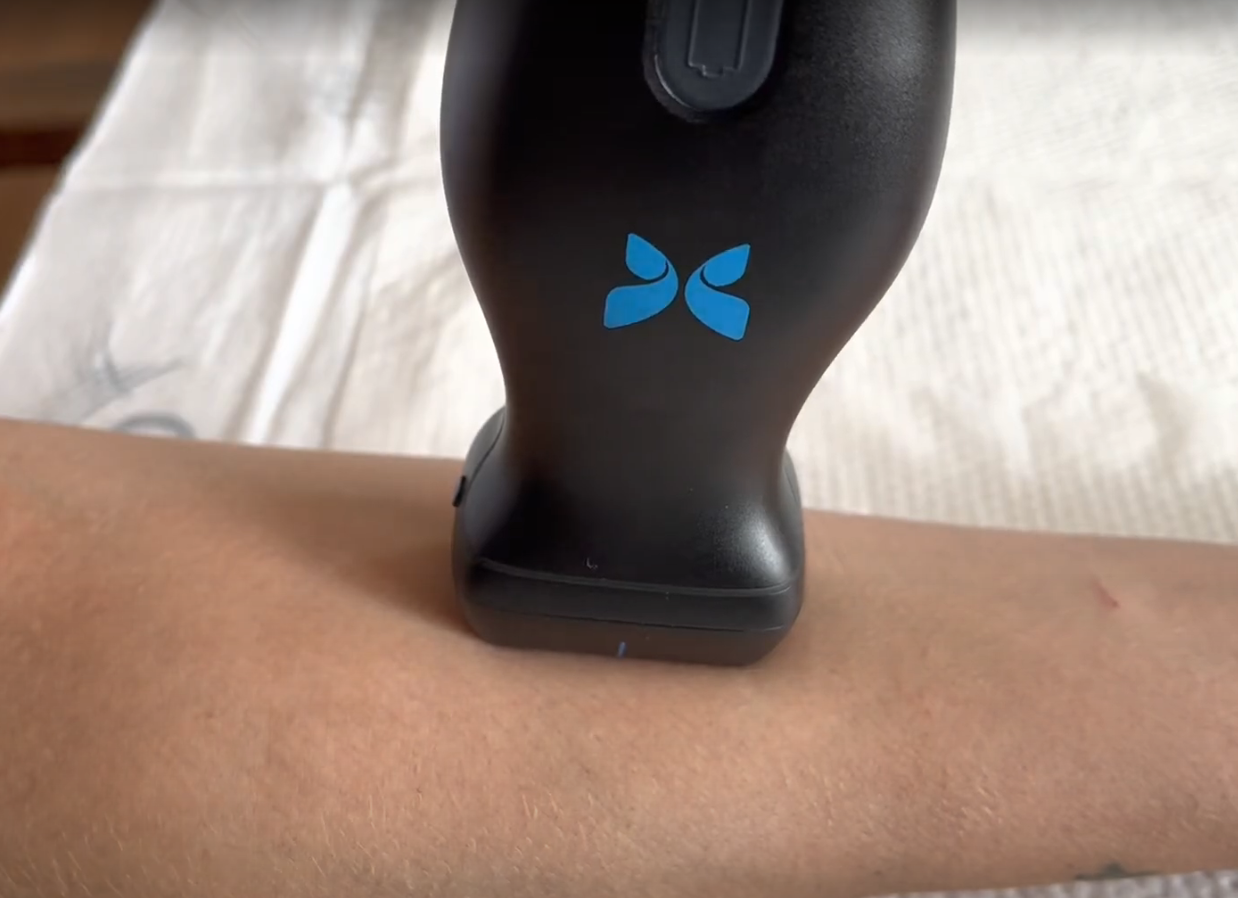Let’s talk about mandible dislocations & how we can reduce them. First, we need to take a look at the mandible anatomy – can refer back to this as we discuss mandible dislocation: So how does the mandible dislocate (also called te…
Procedures
Headaches are the most common complication of doing a lumbar puncture (LP). Let’s dive into what causes them, how to prevent them, and what to do when patients come back suffering from a post-LP headache. Some major theories on why post-LP…
Let’s talk about large bore/central vascular access! We’ll review different kinds, their different names, and when to use them!Of note outside the scope of this review: how to insert each of these – I think this is better learned by watchin…
Causes, prevention, presentation and treatment of LAST: Local Anesthetic Systemic toxicity
Step by step guide to build your own homemade ultrasound gelatin model for IV access. It’s simple, cheap and fast!
Ultrasound probe movements, the quest of the good vein, out-of-plane technique and in-plane technique of the ultrasound-guided intravenous line
Trauma is the leading cause of non-obstetric death in pregnant women. MVAs and intimate partner violence account for most cases. Let’s first discuss the physiological changes to consider when managing a pregnant patient in a trauma. M…
Central Line Week TR Pearl Series (all three pearls combined for this post) by Ryan LeBuhn, PGY-3 Informed Consent I once described the risks of a procedure so thoroughly that the patient no longer wanted the procedure, though avoiding the…
CSF shunts – these are the most common pediatric neurosurgery procedure done in the United States. While very common, these also have the highest rate of neurosurgical complications. About 50% fail within the first year, and the median survival of a shunt is usually 8-10 years, so a patient can expect 2-3 shunt revisions over the course of 20 years.
2 weeks ago, I had a patient presenting with an upper GI bleed. Despite aggressive treatment, the patient was still hypotensive and actively bleeding. Unfortunately, the GI fellow was on home call and further than expected from the hospital…
Case: 37-year-old M presenting with obtundation and possible seizure-like activity after a large overdose of sustained-release bupropion (Wellbutrin XL), gabapentin, and other unknown medications. Given the severity of this patient’s…
So today, we’re gonna talk about shoulder dislocations. This should resonate with a lot of you residents considering the weather conditions currently, or if you were worried about what would happen if a certain SuperBowl performer wer…
It’s winter and nobody has shoveled the roads; everyone and their mama is slipping. You have a patient with an obvious ankle dislocation and ortho is requesting that you put the patient to sleep so they can yank on the foot in peace w…
He dribbles calmly at the top of the key. Fakes right, crossover, drives forward, spin move. 2 ankles down, 0 to go. He takes a step and finishes with a huge dunk. Boom, right shoulder comes out. …Alright, so this never happened, but…
An Ode to Bougie Written by Paul Johnston So what’s a bougie? If you already know, skip this paragraph. A bougie is a flexible rod used to aid intubations. During a “conventional” intubation an ET tube w…



